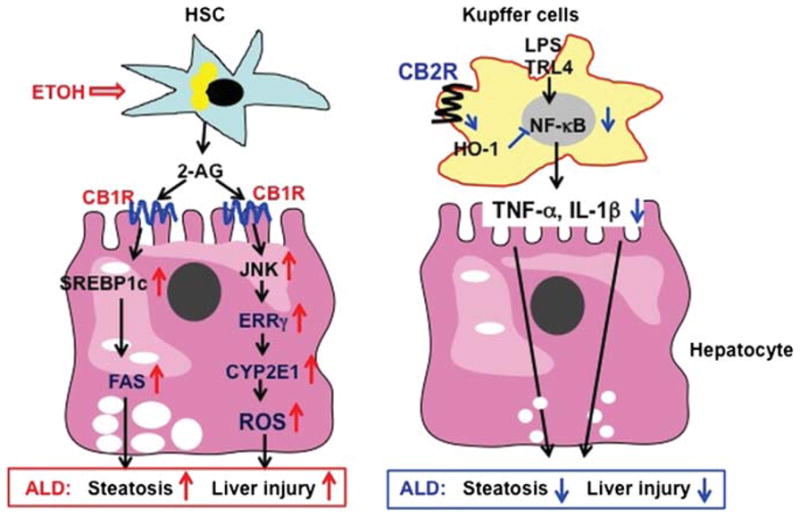Figure 1.

Opposing roles of CB1 and CB2 receptors in the pathogenesis of alcoholic liver disease (ALD). Chronic alcohol consumption stimulates hepatic stellate cell to release 2-arachidonoyl glycerol, which binds CB1 receptors on neighbouring hepatocytes, followed by activating SREBP-1c and CYP2E1, thereby exacerbating ALD. Chronic alcohol consumption may also activate CB2 receptors on Kupffer cells, followed by inhibiting the proinflammatory responses and ameliorating ALD.
